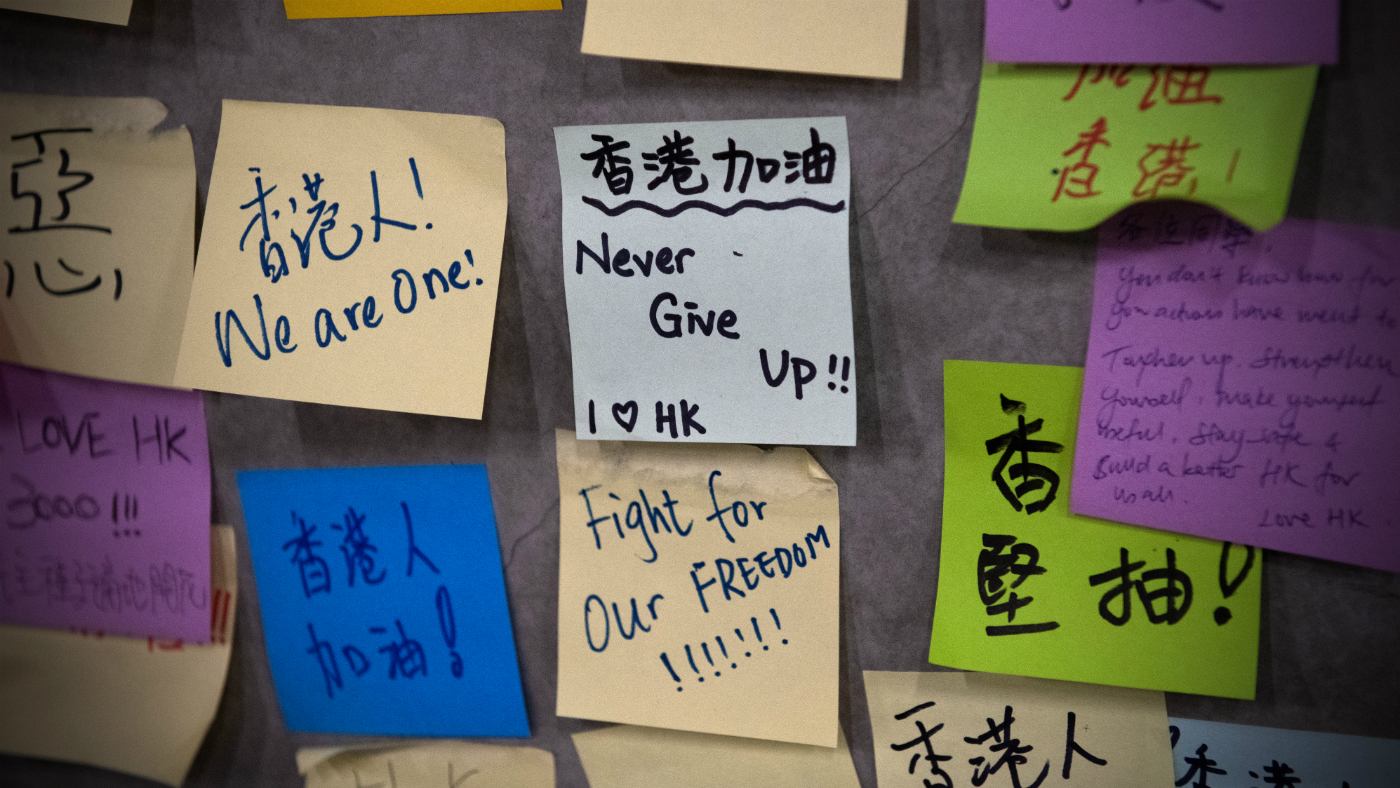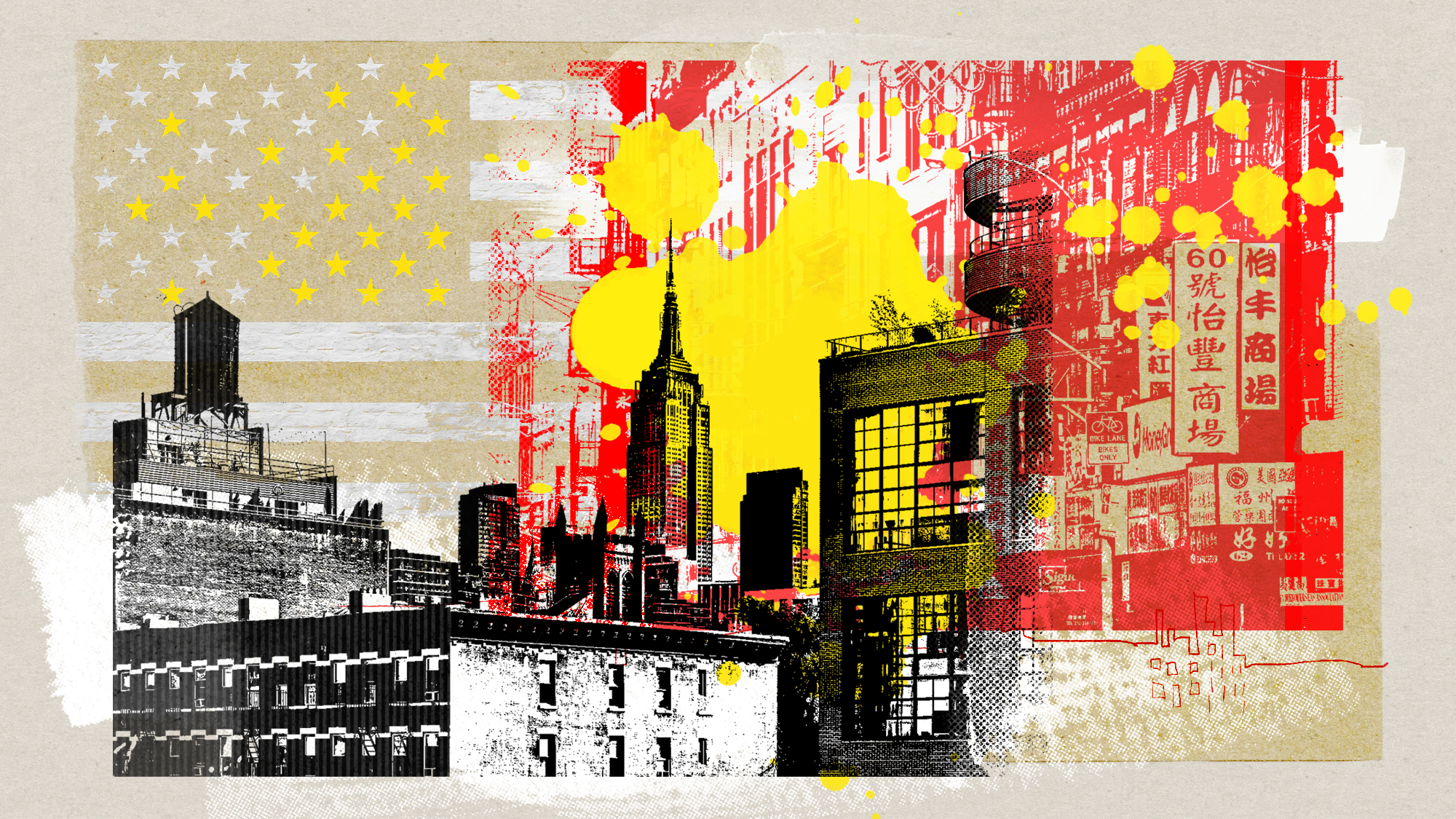How Post-it notes became a colourful weapon of protest
The sticky bits of paper are key part of the toolkits of demonstrators in Hong Kong

The streets of Hong Kong are being plastered with thousands of Post-it notes carrying messages from protesters rallying against a controversial extradition bill.
The protests have been going on for more than a month and have spread from the epicenter of the city to its surrounding districts - as have the colourful sticky notes.
The messages emblazoned on them include everything from Martin Luther King Jr. quotes to death threats against local police.
The Week
Escape your echo chamber. Get the facts behind the news, plus analysis from multiple perspectives.

Sign up for The Week's Free Newsletters
From our morning news briefing to a weekly Good News Newsletter, get the best of The Week delivered directly to your inbox.
From our morning news briefing to a weekly Good News Newsletter, get the best of The Week delivered directly to your inbox.
The protests were triggered by an extradition bill that would open the way for Hong Kong residents to be sent to mainland China for trial in courts controlled by the Communist Party. Although the proposals have been suspended, though not withdrawn, the demonstrations have evolved into protests against broader threats to the city’s autonomy.
Millions of people have taken to the streets to call for action against police brutality and a lack of democracy.
As Quartz reports, “the protests have continued and shape-shifted into what participants say are ‘fluid’ tactics to maintain pressure on the government while taking their message all around Hong Kong”, with Post-it notes left on so-called Lennon Walls playing a crucial role.
What are Lennon Walls?
A free daily email with the biggest news stories of the day – and the best features from TheWeek.com
The name harks back to the original section of a concrete staircase near Hong Kong’s government complex that was covered with the sticky notes during the 2014 Umbrella Movement.
That original wall, in turn, was named after the John Lennon Wall in Prague, where Czech youth used to express their feelings through graffiti that often included Beatles’ lyrics.
In their latest incarnation, the walls have “evolved from being a sort of emotional support station to becoming a central part of the protesters’ toolkit”, reports Quartz.
Images showing some of the hundreds of thousands of Post-it notes dotted across Hong Kong have been taking social media by storm, amid calls for support and donations of supplies for the protesters.
Some people in Hong Kong - typically older, pro-China citizens - have tried to tear down the messages, but they are quickly reinstated.
Protesters are also using legal loopholes to keep their notes intact, with some shop staff warning that messages stuck inside their business premises are “private property”.
One protester, named only as Crystal, told Quartz that she had been keeping watch over a Lennon Wall near Tai Po Market train station, a residential area and busy transport interchange in the city’s northern suburbs.
“The wall has a real impact. Other people can read our views. It can help change the opinions of people who didn’t originally support us… It’s only with the support of the people that we can continue down this path of resistance,” she said.
Have other protesters used Post-it notes?
Yes, in countries worldwide including the US.
“In the emotional days following the November 2016 election that put President Donald Trump in power, no one had any idea they might find a shred of solace in words scribbled on a mundane office supply,” says Mashable. “But underground, in the depths of a New York City subway station, a powerfully expressive initiative fuelled by thousands of Post-it Notes was under way.”
The colourful mosaic of around 50,000 Post-its, later named as the Subway Therapy project, spanned the walls of Manhattan’s Union Square station.
Activists in Thailand also used sticky notes in 2016 to demand freedom of expression from the military-led government, according to the Bangkok Post.
-
 Farage’s £9m windfall: will it smooth his path to power?
Farage’s £9m windfall: will it smooth his path to power?In Depth The record donation has come amidst rumours of collaboration with the Conservatives and allegations of racism in Farage's school days
-
 The issue dividing Israel: ultra-Orthodox draft dodgers
The issue dividing Israel: ultra-Orthodox draft dodgersIn the Spotlight A new bill has solidified the community’s ‘draft evasion’ stance, with this issue becoming the country’s ‘greatest internal security threat’
-
 Codeword: December 13, 2025
Codeword: December 13, 2025The daily codeword puzzle from The Week
-
 Femicide: Italy’s newest crime
Femicide: Italy’s newest crimeThe Explainer Landmark law to criminalise murder of a woman as an ‘act of hatred’ or ‘subjugation’ but critics say Italy is still deeply patriarchal
-
 Brazil’s Bolsonaro behind bars after appeals run out
Brazil’s Bolsonaro behind bars after appeals run outSpeed Read He will serve 27 years in prison
-
 Americans traveling abroad face renewed criticism in the Trump era
Americans traveling abroad face renewed criticism in the Trump eraThe Explainer Some of Trump’s behavior has Americans being questioned
-
 Nigeria confused by Trump invasion threat
Nigeria confused by Trump invasion threatSpeed Read Trump has claimed the country is persecuting Christians
-
 Sanae Takaichi: Japan’s Iron Lady set to be the country’s first woman prime minister
Sanae Takaichi: Japan’s Iron Lady set to be the country’s first woman prime ministerIn the Spotlight Takaichi is a member of Japan’s conservative, nationalist Liberal Democratic Party
-
 Russia is ‘helping China’ prepare for an invasion of Taiwan
Russia is ‘helping China’ prepare for an invasion of TaiwanIn the Spotlight Russia is reportedly allowing China access to military training
-
 Interpol arrests hundreds in Africa-wide sextortion crackdown
Interpol arrests hundreds in Africa-wide sextortion crackdownIN THE SPOTLIGHT A series of stings disrupts major cybercrime operations as law enforcement estimates millions in losses from schemes designed to prey on lonely users
-
 China is silently expanding its influence in American cities
China is silently expanding its influence in American citiesUnder the Radar New York City and San Francisco, among others, have reportedly been targeted